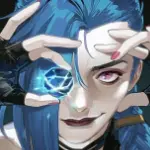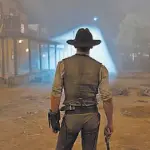“The Boy and the Heron” presents a challenging case for evaluation.
Hayao Miyazaki has crafted an extensive array of effortlessly captivating tales over his lifetime, consistently attuned to audience tastes and preferences. He has unfailingly placed the audience, especially children, at the forefront, often putting aside his personal inclinations. As a director, his mission extends beyond merely narrating a story in a clear and engaging manner. Miyazaki sees it as his responsibility to offer spiritual and moral guidance through his films.
In this film, for the first time, Miyazaki appears to indulge more in his personal storytelling desires. It seems that his primary focus is no longer on crafting a universally appealing narrative. Instead, he seems driven to create a story primarily for himself. He appears less concerned about whether the story resonates with adults or children, or if it maintains entertainment and intrigue. This shift towards self-indulgence seems to have emerged notably as he reached 80 years old. Undoubtedly, this self-indulgent approach might render the film more challenging for anyone other than Miyazaki himself to fully comprehend. Nevertheless, there should be a place in the world for such artistic expressions and works that might not readily cater to broader understanding, acknowledging the value of individualistic creative expression.

In "The Boy and the Heron", Miyazaki employs artistic and emotionally evocative techniques. He seems akin to a boy who, despite a lifetime of feeling awkward, is fully aware of his immense abilities and skillfully utilizes them. As a director, Miyazaki dutifully intertwines themes of love and dreams, ensuring that each child's imagination is nurtured and cherished within the narrative.
Finally, one day, he wanted to bring out that awkwardness of the boy, but because he had been suppressing it for so long, it came out in a strange and uncomfortable way, leaving the audience feeling uneasy as well. Therefore, the experience of watching this film is not easy for the audience. It is not only not enjoyable, but also ambiguous and suffocating.

Perhaps as people grow older, they have a stronger desire to explore their childhood and their inner selves. Miyazaki blends his love for his mother and his own autobiography into this film. Of course, the backdrop of the story is still war related. After all, this has been the core theme he has struggled with throughout his life.
This film embodies a significant contradiction. On one side, viewers are likely to be profoundly moved by Miyazaki's unwavering dedication. His generation's perspective, shaped by wartime experiences, stands in stark contrast to the life perception of today's generation, largely unexposed to such conflict. Many who directly experienced the realities of war have gradually passed away, leaving behind a different understanding of life. Miyazaki's intent seems to be preserving and passing down this crucial experience, delving into survival methods relevant not only to his generation but to all of humanity. He strives to create a legacy, leaving behind wisdom for future generations. However, because the film predominantly touches on this theme, it might come across as somewhat outdated in the context of modern sensibilities.

As a fan of Studio Ghibli, there are many reflections of past works in this film. For example, the figure of Pazu emerging from a hole, the flowers on the grass where Chihiro has lain, the forest of Princess Mononoke (and even the tunnel at Yakushima, the filming location for “Princess Mononoke”), and the train station in “Spirited Away”.
Towards the conclusion, Miyazaki addresses a universal childhood conundrum through the white stone carried by the male protagonist. It's as if he's answering the lingering question that every child has encountered: indeed, if Chihiro possesses that hair tie, she would remember the enchanting world of the bathhouse. Miyazaki intentionally incorporates this detail, even though he could have omitted it without leaving any noticeable mark. Quietly, he veils his lifelong dedication to animation within this film. In a way, he becomes the protagonist leading you on a journey to explore his own fantastical world.
So, how can you bear not giving this old man a good rating?










































Share your thoughts!
Be the first to start the conversation.